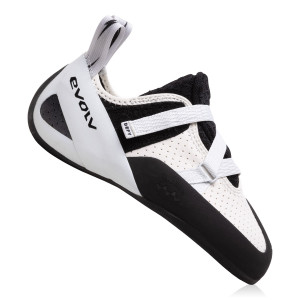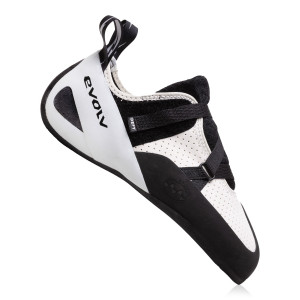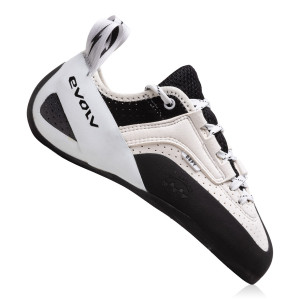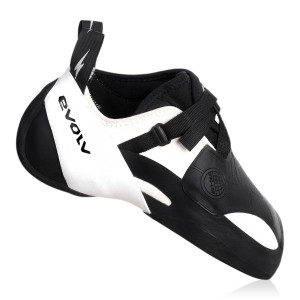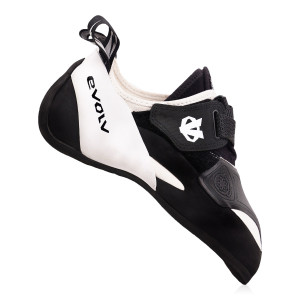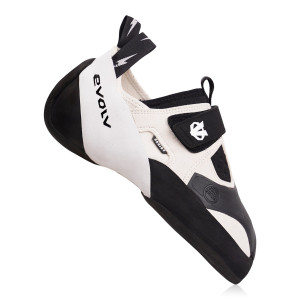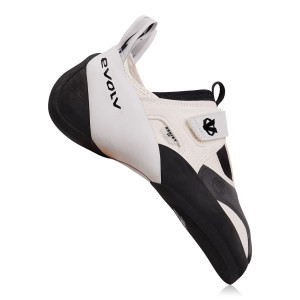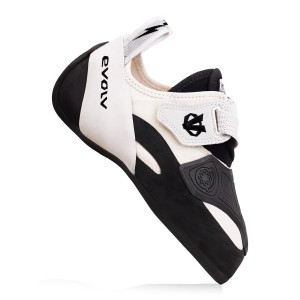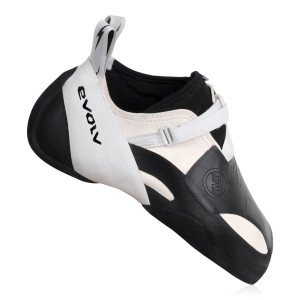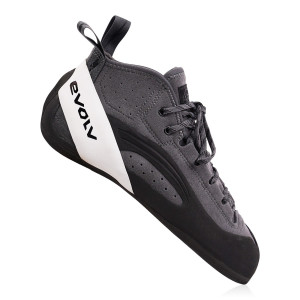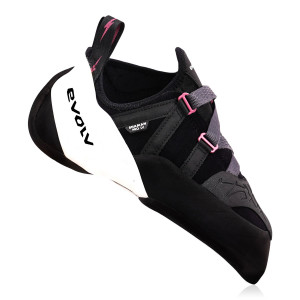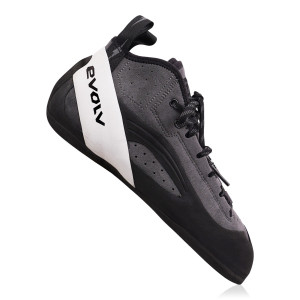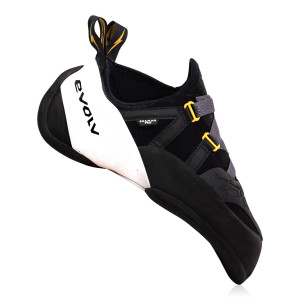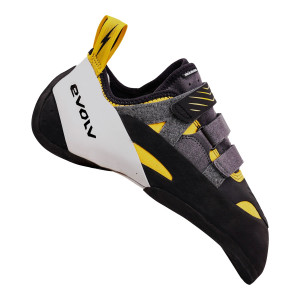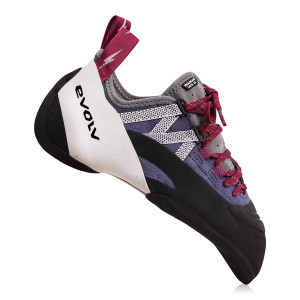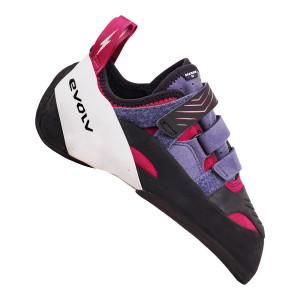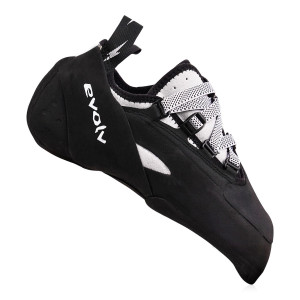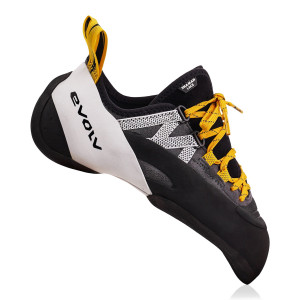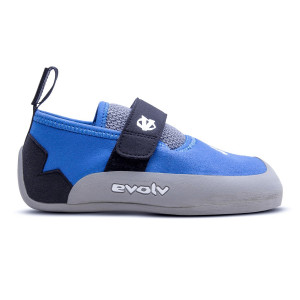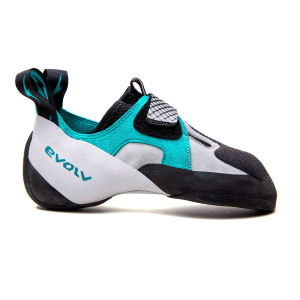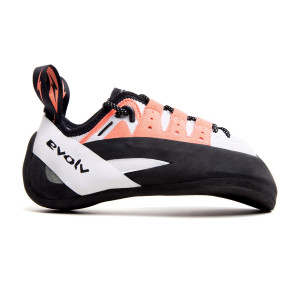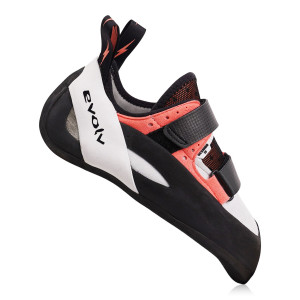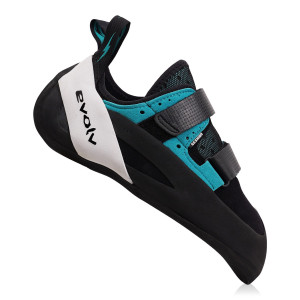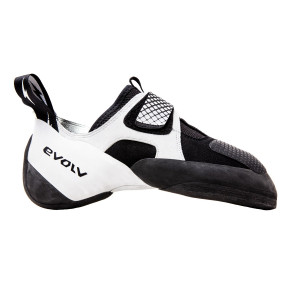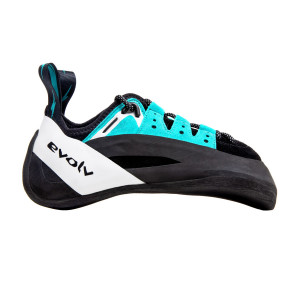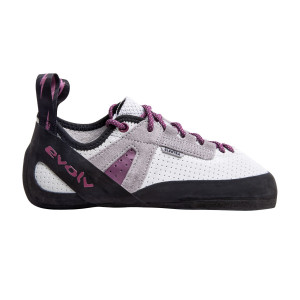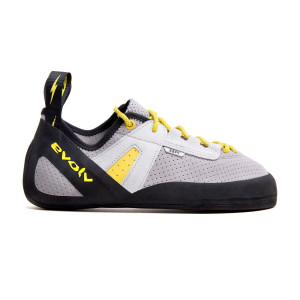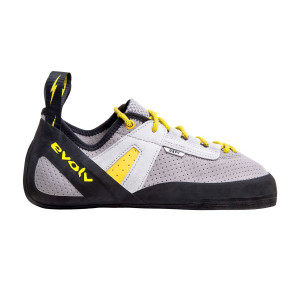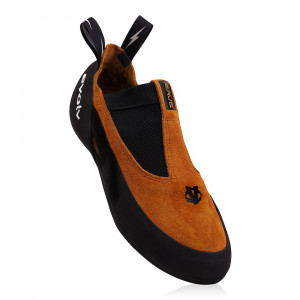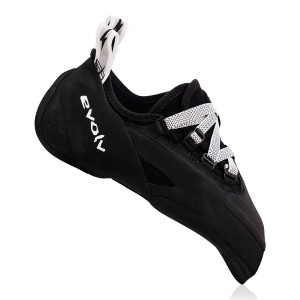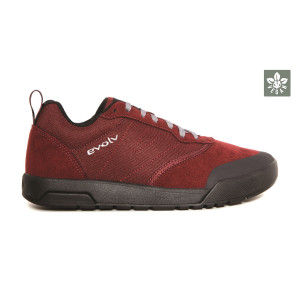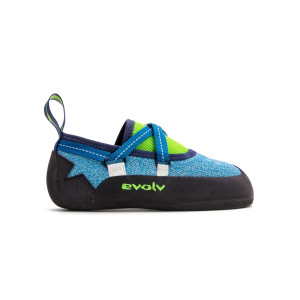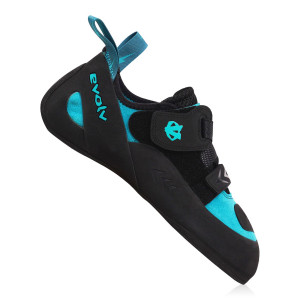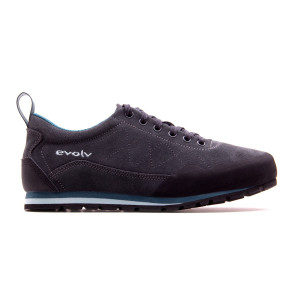Climbing Shoes: Bouldering and Climbing Indoor & Outdoor
(48)Climbing shoes for rock and bouldering for every climber. We cater to a wide range of climbers from new to veteran and even amputee adaptive climbers. Whether you're a beginner seeking comfort or an advanced climber pushing your limits, Evolv has the perfect pair. Explore our range of leather, synthetic, and vegan options, designed for indoor and outdoor climbing, sport climbing, and bouldering. Discover narrow, slab, and soft climbing shoes for specific climbing styles. Check our Size Guide and find inspiration from Team Evolv. Remember, the right shoe is essential for performance and comfort. Consider your climbing style, foot shape, and desired level of sensitivity when choosing. For a complete climbing setup, pair your shoes with chalk bag.
How to buy climbing shoes online?
When you buy a climbing shoe it is necessary to take into account some considerations:
- Climbing Performance
As you are a beginner and you are searching for a moderate performance to progress very quickly, or you are a veteran climber searching for ultra-performance climbing shoes. - Climbing Activity
As you prefer outdoor or indoor, boulder, alpine climbing, the climbing shoe needs to respond to specific characteristics in terms of size and material. - Shoe Fit
The foot shape, the material of the footwear, and the shoe closure are the main features to consider obtaining the best fit, as the climbing shoe is the only filter between you and the rock.
How to know which climbing shoe is right for you?
Having the best fit with a combination of performance and comfort is the right climbing shoe. You want your foot to fit snugly into the shoe with your toes slightly curled and heel firmly in the heel cup.
Best way to know is to try the shoe to feel comfortable in terms of fit, size, and according to the shape of your foot. For your first purchase, the suggestion is to buy more sizes to be sure to choose the right one for you.
Our shoes usually fit the same number you have for street shoes.
How should climbing shoes fit (smaller) and how tight should be?
Climbing shoes should fit snug onto your foot with your toes curled. It will feel tight so your feet and toes cannot move around. It is important to not have internal dead space or gaps between the toes, as they can reduce the sensibility. Usually, when the fit is tighter, the performance of the product is higher.
The shoe material can change the perception of the foot and the performance on climbing, as the types of climbing you want to approach.
Is there any gender difference?
What is more important than the gender is the shape of your foot, because it could be more suitable a woman shoe for a man or the contrary.
Don’t focus on gender specific shoes, but keep attention to your personal needs:
- foot shape, choosing the right model
- the most suitable material in contact with your feet: leather is softer, while synthetic leather is faster to dry
- closure system according to your needs: velcro, faster, lace-up, more stable and fix on your feet
This is the reason why our climbing shoes are unisex, as we focused more on shape and sizes, according to the climbing style and the level of performance.
It is necessary to wear socks with climbing shoes?
It is not necessary to wear socks. It is recommended to wear climbing shoes without socks for the performance, as they usually are designed to be in direct contact with the skin to improve the comfort and the perception. Many climbers prefer to wear socks, as they feel a stronger fit.
Keep in mind that usually the size is calculated for a foot without socks. If you prefer to wear socks, be aware of it when you choose the size.
How to break in climbing shoes?
The best way to break in climbing shoes is to wear them as long as possible. The heat and sweat from your feet will help loosen the rubber, leather and/or synthetic leather.
What shoes to choose depending on the discipline?
When you choose the climbing shoe, it is also fundamental to consider the discipline you need them for, as the shoe can have specific features designed for a specific climbing, and at the same time to perform on all types of rock, indoor and outdoor.
- Rock Climbing
It is needed a sticky rubber of the sole to afford the very vertical walls, as the level of traction needed is very high. The shoe for rock climbing offers a good perception with all fingers as it is important to perceive all the imperceptive imperfections of the rock. It is advisable to wear them without socks. - Bouldering
It is important to feel all parts of your climbing shoe as your body and your feet are always in a power position. Precise foot position is required all the time, as the climbing session is usually short and intensive. In this discipline it is important to have a shoe that will not stretch too much over the time. The sole needs to provide enough rigidity and at the same time the suitable sensitivity and delicate heel & toe hooks. - Alpine Climbing
The typical feature of this discipline is the long climbing demand for your feet with a long-term wear. During alpine climbing you usually stay in the shoes for a long period of time. It means the climbing shoes need to be not too tight and not too much heel tension. Alpine climbing shoes need to be more comfortable, with no camber. - Sport climbing
This discipline needs a lot of pressure onto the toes, that means asymmetric and tight climbing shoes with a very stiff sole.
What shoes to choose depending on the experience?
Flatter shoes are great to begin with as they are more comfortable. Keep in mind that for a beginner it is better to start with more comfortable shoes, the suggestion is to start with all-around shoes. Those shoes provide a full comfort, but at the same time a level of performance that allows you to learn quickly.
Downturned shoes with a higher hill tension (shoes with a stiffer midsole) are ideal for high performance as they put the feet in a stronger position to afford challenges and test your limits in the gyms, but also in crags and walls outside.
Should climbing shoes hurt?
Climbing shoes should not hurt but more of a discomfort. The fit will be snug with toes curled. It is important to fit snug without pain. If the shoe hurts, the final performance is lower as you will be more focused on the pain than what you are doing, and you can also have problems with blisters and calluses.
Even the stability is fundamental: if the feet hurt, your stability decreases and the climb is harder than it is, as you are more focused on the pain than on the climbing.
Keep also in mind that a pain in the foot can cause difficulties in managing the impact in case of a fall.
We hope we have helped you to buy the best climbing shoes for your needs!
Have a look at how to take care of your shoes here.

